Chlamys (Chlamys) rubida (Hinds, 1845)Common name(s): Smooth pink scallop, Reddish scallop, Pacific pink scallop, Swimming scallop |
|
| Synonyms: Chlamys hindsii, Chlamys jordani, Chlamys rubidus | 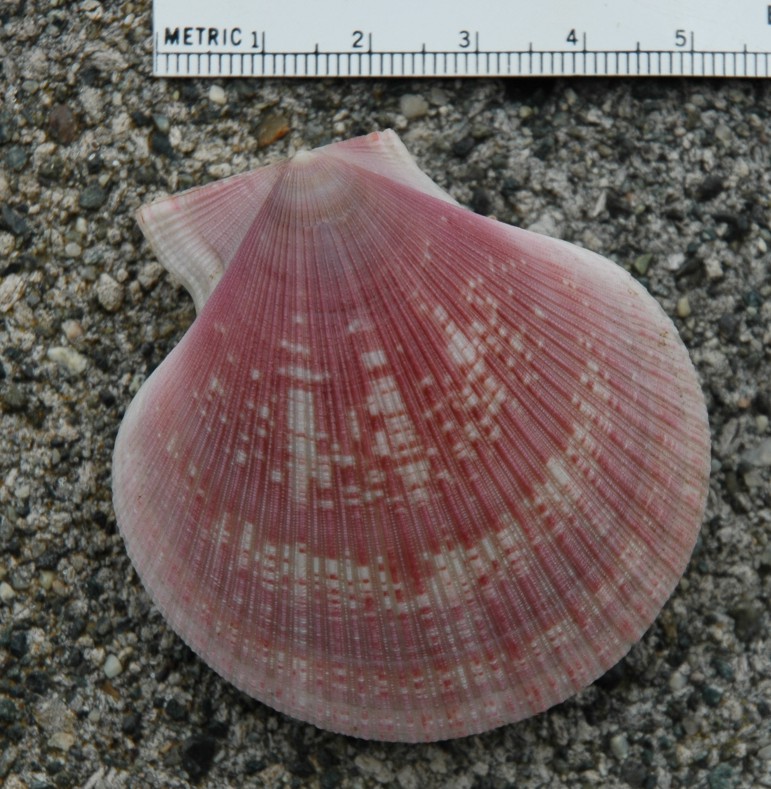 |
| Phylum Mollusca
Class Bivalvia Subclass Pteriomorphia Order Ostroida Suborder Pectinina Family Pectinidae |
|
| Chlamys rubida, 5 cm width, captured subtidally off Sares head | |
| (Photo by: Dave Cowles, July 2007) | |
How to Distinguish from Similar Species: Chlamys hastata is about the same size and shape, but has prominent ruffles or spines on the ribs.
Geographical Range: Alaska Peninsula, AK to San Diego, CA; uncommon S of Puget Sound.
Depth Range: Low intertidal to 300 m; mainly subtidal
Habitat: On rocky or soft bottoms; most common on gravel/mud bottoms.
Biology/Natural History: This species has a slower growth rate than does Chlamys hastata, and puts less of its energy into reproduction. In southern BC, individuals live about 6 years. These species of scallops have many eyes around the perimeter, which can perceive light and direction but cannot form an image. Predators include the seastars Crossaster papposus and Pycnopodia helianthoides. Swimming is a primary escape response. The sinuous whelk, Buccinum plectrum, may also be a predator since the presence of the whelk elicits a swimming response in the scallop. May be parasitized by Odostomia columbiana, the Clam Sucker snail.
This species of scallop is often covered with the symbiotic sponge Myxilla incrustans or Mycale adhaerens. The symbiosis is likely mutualistic. If one of the major predators of the scallop, Evasterias troschelii, encounters the scallop (and the scallop does not swim away) it often turns away if it touches the sponge; likely in response to some secretion or to the spicules from the sponge. The sponge also appears to make it more difficult for the seastar's tube feet to adhere to the scallop. If the sponge is removed from the scallop and the scallop is prevented from swimming, it is readily captured by the seastar. The scallop will also swim from predators of the sponge, such as Archidoris spp, so the sponge is benefited as well. The swimming scallop may also help carry the sponge into areas with clean water and good currents, nd help prevent fouling of the sponge.
| Return to: | |||
| Main Page | Alphabetic Index | Systematic Index | Glossary |
References:
Dichotomous Keys:Kozloff 1987, 1996
General References:
Gotshall,
1994
Harbo,
1997
Kozloff,
1993
Morris,
1966
O'Clair
and O'Clair, 1998
Sept,
1999
Scientific Articles:
Burns, D. and B. Bingham, 2002. Epibiotic sponges on the
scallops
Chlamys hastata and Chlamys rubida:
increased survival
in a high-sediment environment. J. Mar. Biol. Assn. U.K. 82:
961-966
General Notes and Observations: Locations, abundances, unusual behaviors:
Can be found at Sares Head, but usually in much less abundance than is Chlamys hastata. More common in deep benthic trawls in the San Juan Channel.
When these scallops are kept in running seawater tanks the encrusting sponges die and slough off within a few weeks. The scallops live much longer.
Most individuals are at least partly encrusted with sponges, while others in the same area are not.
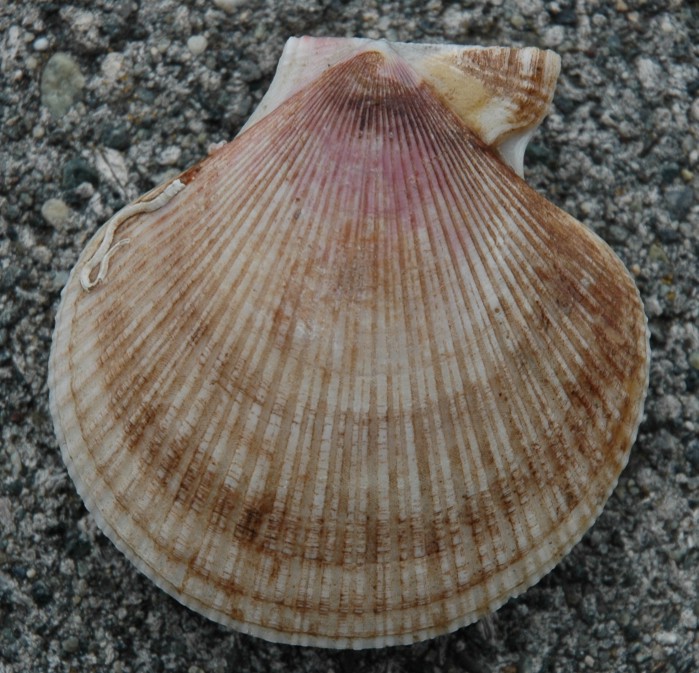
Here is a view of the right valve of the individual above.
These
animals usually sit on the bottom with the left valve up and the right
valve down.
The larger "wing" at the hinge projects anteriorly, and if the shell
is agape the foot can be seen near the anterior end of the shell.
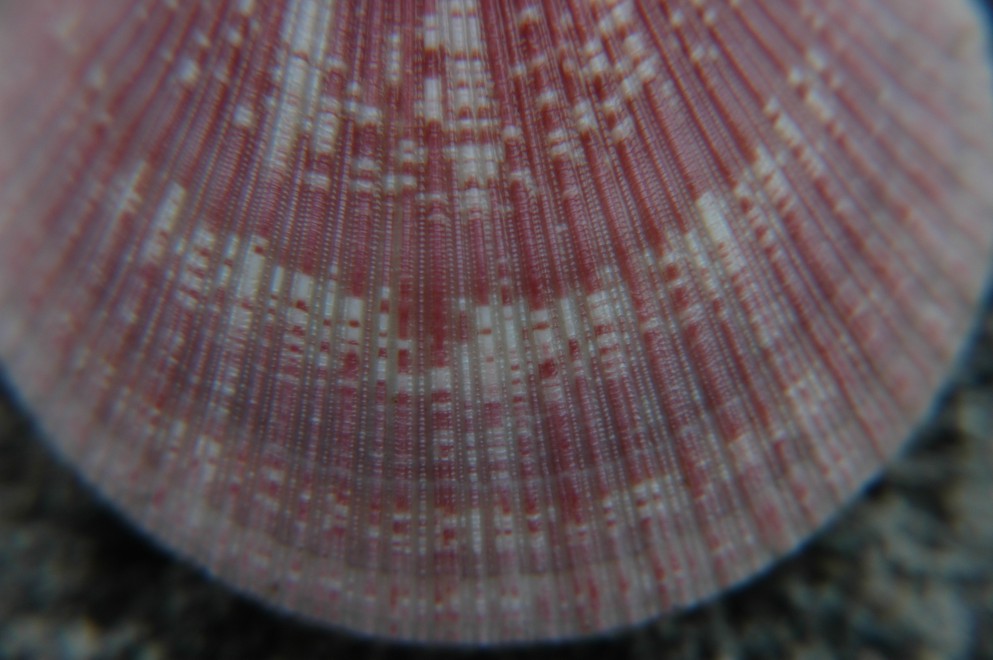 |
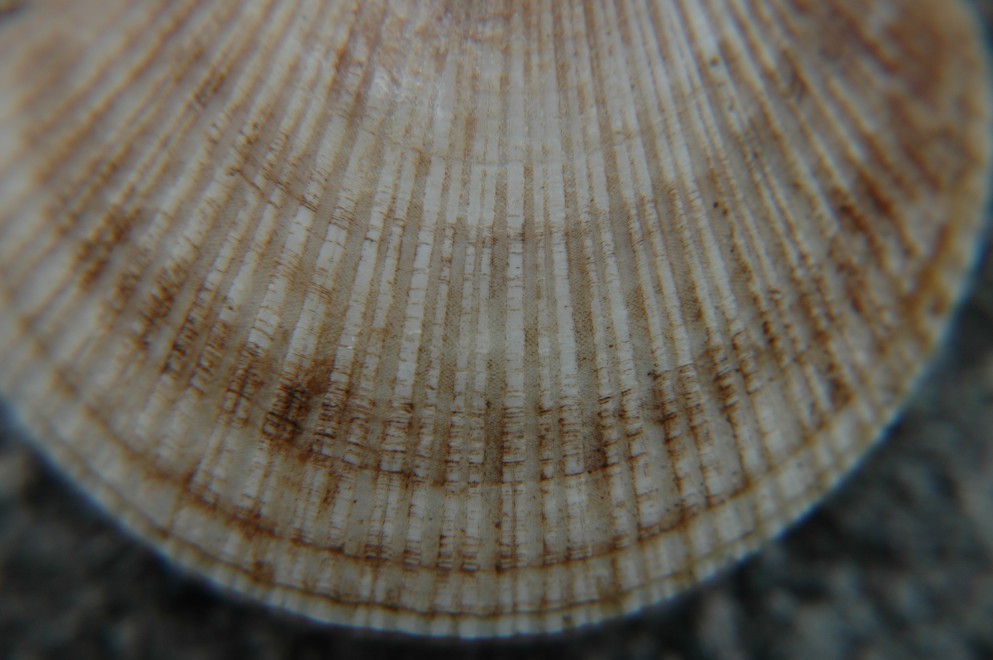 |
| Here is a closeup of the left valve from the individual above. Note that although there are many ridges they are almost entirely smooth. | A closeup of the right valve of the same individual. |
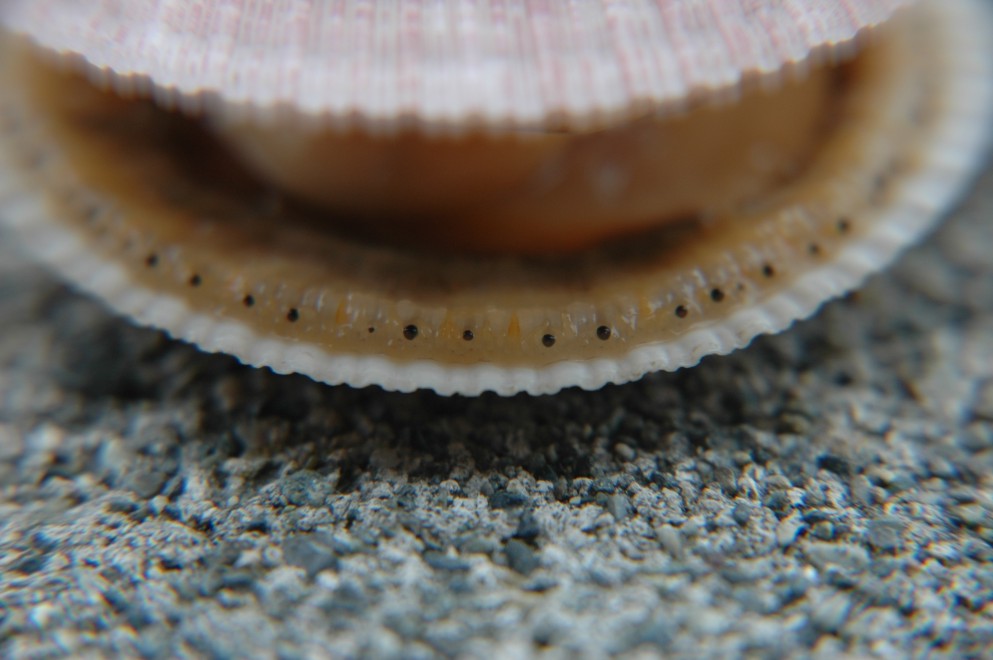
This individual is agape and its row of eyes along the edge of the
mantle can be clearly seen.
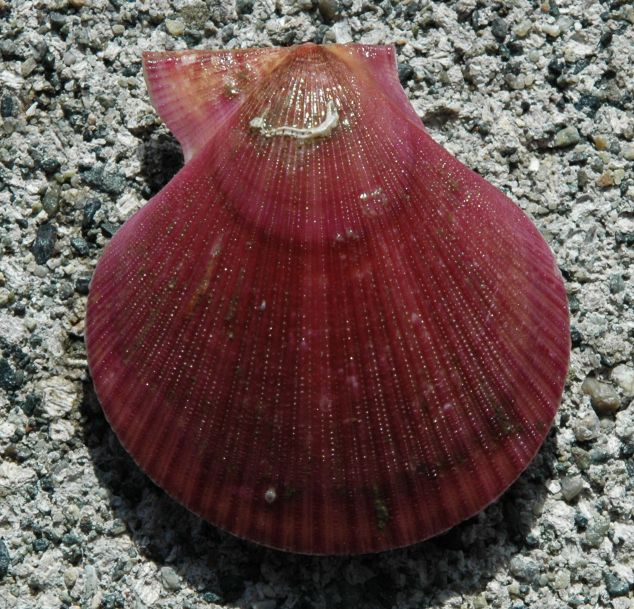
Another specimen of Chlamys rubida, from deeper
water (120 m,
San Juan Channel. Left valve shown. Photo by Dave
Cowles, July
2005
Some very tiny serrations appear to be present on the ridges, but a
closer view (below) shows them to be simply undulations of the
ridge.
Since this
individual has the many ridges characteristic of C. rubida
I
am assuming that it is that species and not C.
hastata even though the ridges are not completely
smooth.

The left valve (above, on top of the animal when it is sitting
normally)
is darker red than the right valve (below, next to the sediment when
the
animal is sitting normally).
Photo by Dave Cowles, July 2005, of an individual from 120 m depth
in San Juan Channel
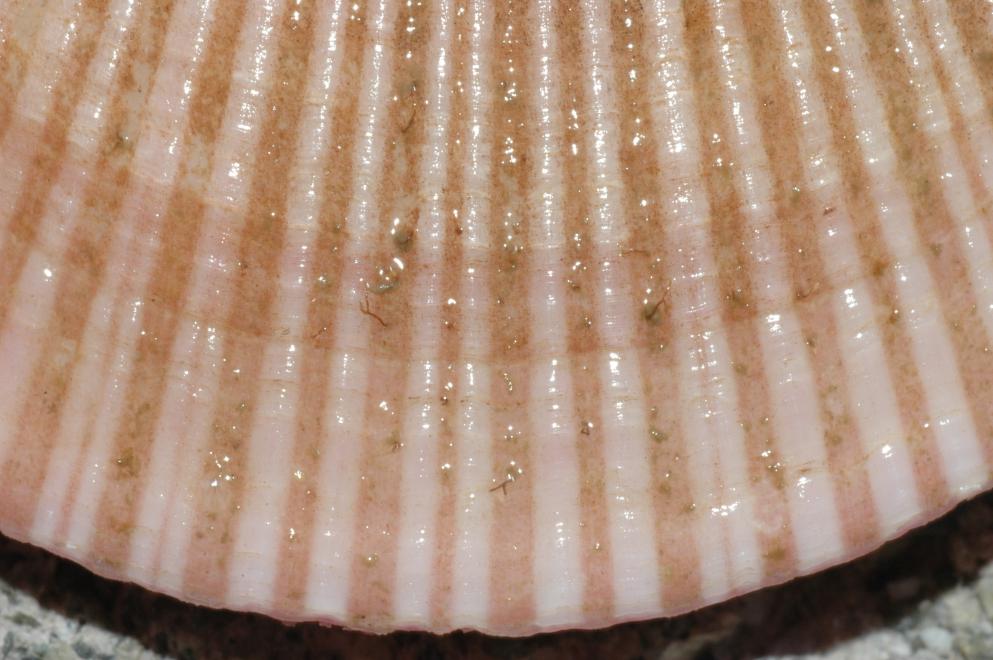
Authors and Editors of Page:
Dave Cowles (2005): Created original page